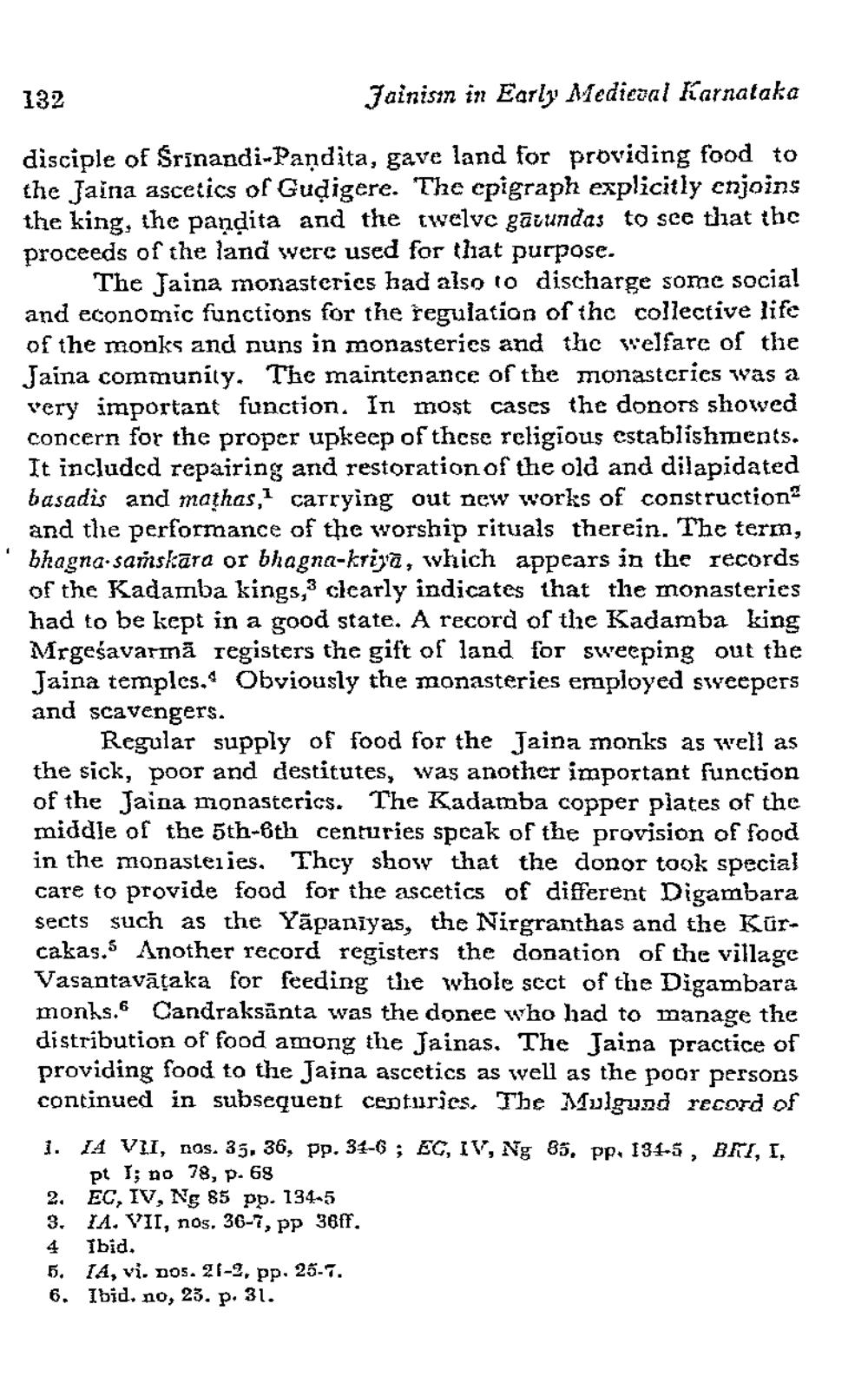________________
1
Jainism in Early Medieval Karnataka
disciple of Srinandi-Pandita, gave land for providing food to the Jaina ascetics of Guḍigere. The epigraph explicitly enjoins the king, the pandita and the twelve gatundas to see that the proceeds of the land were used for that purpose.
The Jaina monasteries had also to discharge some social and economic functions for the regulation of the collective life of the monks and nuns in monasteries and the welfare of the Jaina community. The maintenance of the monasteries was a very important function. In most cases the donors showed concern for the proper upkeep of these religious establishments. It included repairing and restoration of the old and dilapidated basadis and mathas,1 carrying out new works of construction and the performance of the worship rituals therein. The term, bhagna-saṁskāra or bhagna-kriyā, which appears in the records of the Kadamba kings, clearly indicates that the monasteries had to be kept in a good state. A record of the Kadamba king Mrgešavarmā registers the gift of land for sweeping out the Jaina temples. Obviously the monasteries employed sweepers and scavengers.
Regular supply of food for the Jaina monks as well as the sick, poor and destitutes, was another important function of the Jaina monasterics. The Kadamba copper plates of the middle of the 5th-6th centuries speak of the provision of food in the monasteries. They show that the donor took special care to provide food for the ascetics of different Digambara sects such as the Yapaniyas, the Nirgranthas and the Kürcakas. Another record registers the donation of the village Vasantavāṭaka for feeding the whole sect of the Digambara monks. Candraksänta was the donee who had to manage the distribution of food among the Jainas. The Jaina practice of providing food to the Jaina ascetics as well as the poor persons continued in subsequent centuries. The Mulgund record of
132
1. JA VII, nos. 35, 36, pp. 34-6; EC, IV, Ng 85, pp. 134-5, BRI, I, pt I; no 78, p. 68
2. EC, IV, Ng 85 pp. 134-5
3. IA. VII, nos. 36-7, pp 36ff.
4
Ibid.
5. IA, vi. nos. 21-2, pp. 25-7. 6. Ibid. no, 23. p. 31.




